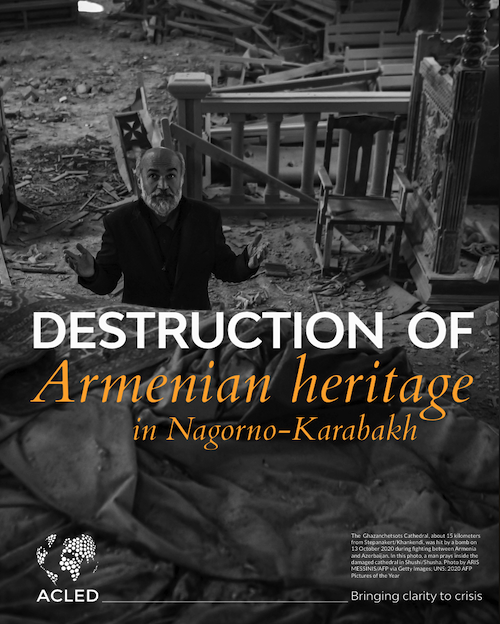Destruction of Armenian heritage in Nagorno-Karabakh
20 September 2024
The Ghazanchetsots Cathedral, about 15 kilometers from Stepanakert/Khankendi, was hit by a bomb on 13 October 2020 during fighting between Armenia and Azerbaijan. In this photo, a man prays inside the damaged cathedral in Shushi/Shusha. Photo by ARIS MESSINIS/AFP via Getty Images; UNS: 2020 AFP Pictures of the Year.
Azerbaijan appears to have embarked on a campaign targeting traces of ethnic Armenian presence since it regained control of the areas surrounding the former mountainous separatist enclave of Nagorno-Karabakh, also known by its Armenian name of Artsakh,1The disputed territory of Nagorno-Karabakh is internationally recognized as part of Azerbaijan. ACLED refers to the former de facto state and its defunct institutions in the hitherto ethnic Armenian majority areas of Nagorno-Karabakh as Artsakh — the name by which the de facto territory used to refer to itself. For more on methodology and coding decisions around de facto states, see the methodology primer about Central Asia and the Caucasus on ACLED’s Knowledge Base. in 2020. Since 2021, ACLED records nearly 80 instances of the destruction of ethnic Armenian historical, religious, political, and residential sites in and around the enclave. The pace of destruction accelerated following Azerbaijan’s offensive against Artsakh and the exodus of its population in September 2023, marking another point of tension in the decades-old ethnic conflict. Meanwhile, Azerbaijan claims ethnic Armenians targeted Azeri cultural heritage while occupying parts of Azerbaijan.2Ministry of Foreign Affairs of the Republic of Azerbaijan, ‘Damage to cultural heritage,’ accessed on 18 September 2024
Use the interactive map below to see instances of destruction of Armenian heritage since 2021.
Scroll past the map for the full report.
Monument Watch and Caucasus Heritage Watch at Cornell and Purdue Universities, two research bodies that investigate incidents of destruction, provided photos of several of the monuments.
Interactive map
This map shows events involving the destruction of Armenian heritage from January 2021 to August 2024, divided by target type. Click on each event on the map for more details, including images where available.
Use the date filters to adjust the time period in view (days with events are marked in light gray on the calendar). Check ‘scroll to zoom’ to enable zooming on the map.
Erasing space: Destruction of Armenian heritage in and around Nagorno-Karabakh
In early August 2024, Azerbaijani military forces completely destroyed Mokhrenes — a village also known by its Azerbaijani name of Susanlyg. Before this, Azerbaijani forces destroyed the Saint Sargis Church in the settlement in October 2022.
Image 1: The entrance to Saint Sargis Church in Mokhrenes/Susanlyg. The photo is from the certificate provided by the Ministry of Education, Science, Culture, and Sport of the Republic of Artsakh; Monument Watch
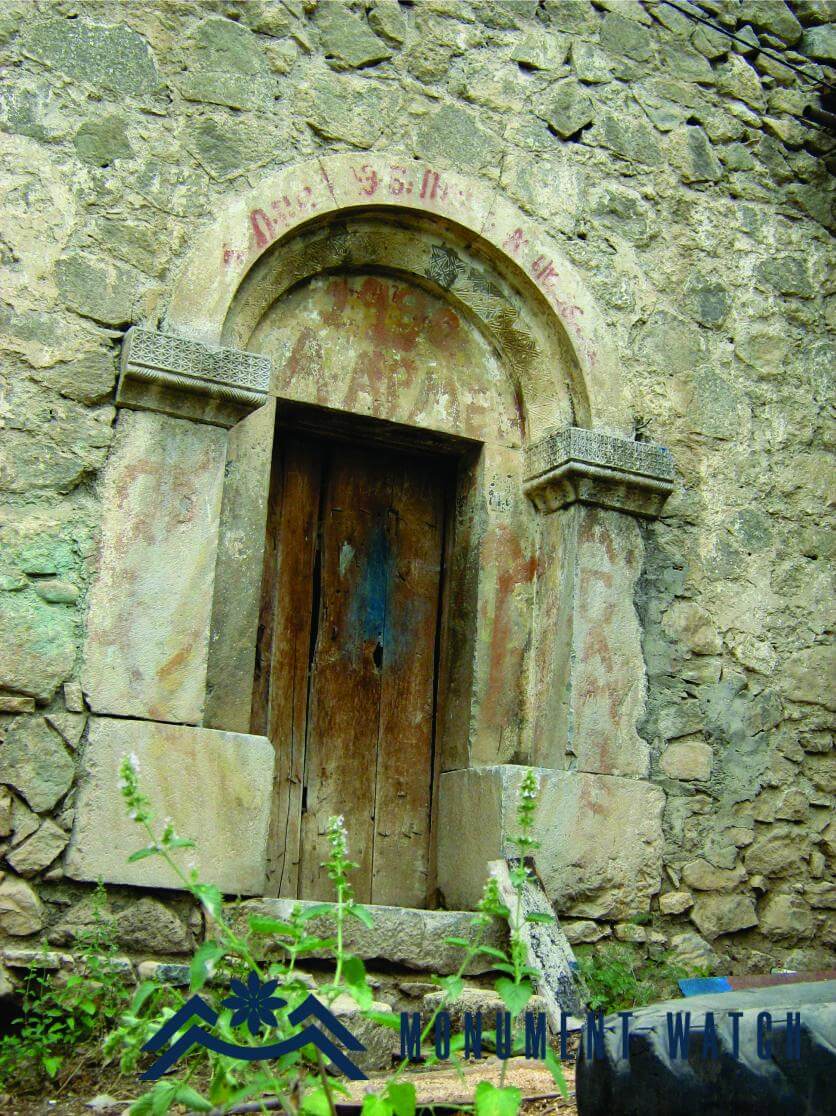
Mokhrenes/Susanlyg is the second village south of Shushi/Shusha that Azerbaijani forces razed to the ground. Four months earlier, in April 2024, they also destroyed the village of Karin Tak, also known as Dashalty.
Destruction of Armenian heritage in former Artsakh
November 2020 – September 2024

Note: Static maps used in this report reference Armenian toponyms for areas formerly controlled by Artsakh. The text references both Armenian and Azerbaijani names of settlements.
Azerbaijan regained control over Shushi/Shusha in 2020 after fighting a second war against Artsakh. Per the terms of the Russian-brokered ceasefire,3Kremlin.ru, ‘Statement of President of Azerbaijan, Prime Minister of Armenia and President of the Russian Federation,’ 10 November 2020 it regained areas around Artsakh and the hitherto uncontrolled section of the border with Armenia, sealing Artsakh’s fate. Armed clashes persisted despite the deployment of Russian peacekeepers to the area. In addition, Azerbaijan gradually imposed its control on the Lachin corridor linking Artsakh to Armenia.
Photo: Russian President Vladimir Putin and Azerbaijani President Ilham Aliyev meet by videoconference to sign the 2020 Nagorno-Karabakh ceasefire agreement on 10 November. Photo by President.az CC BY 4.0 via Wikimedia Commons.
Background image: View from Zodk (Sotk) Pass in the mountainous area of Karabakh. Photo by Kirill/Adobe Stock
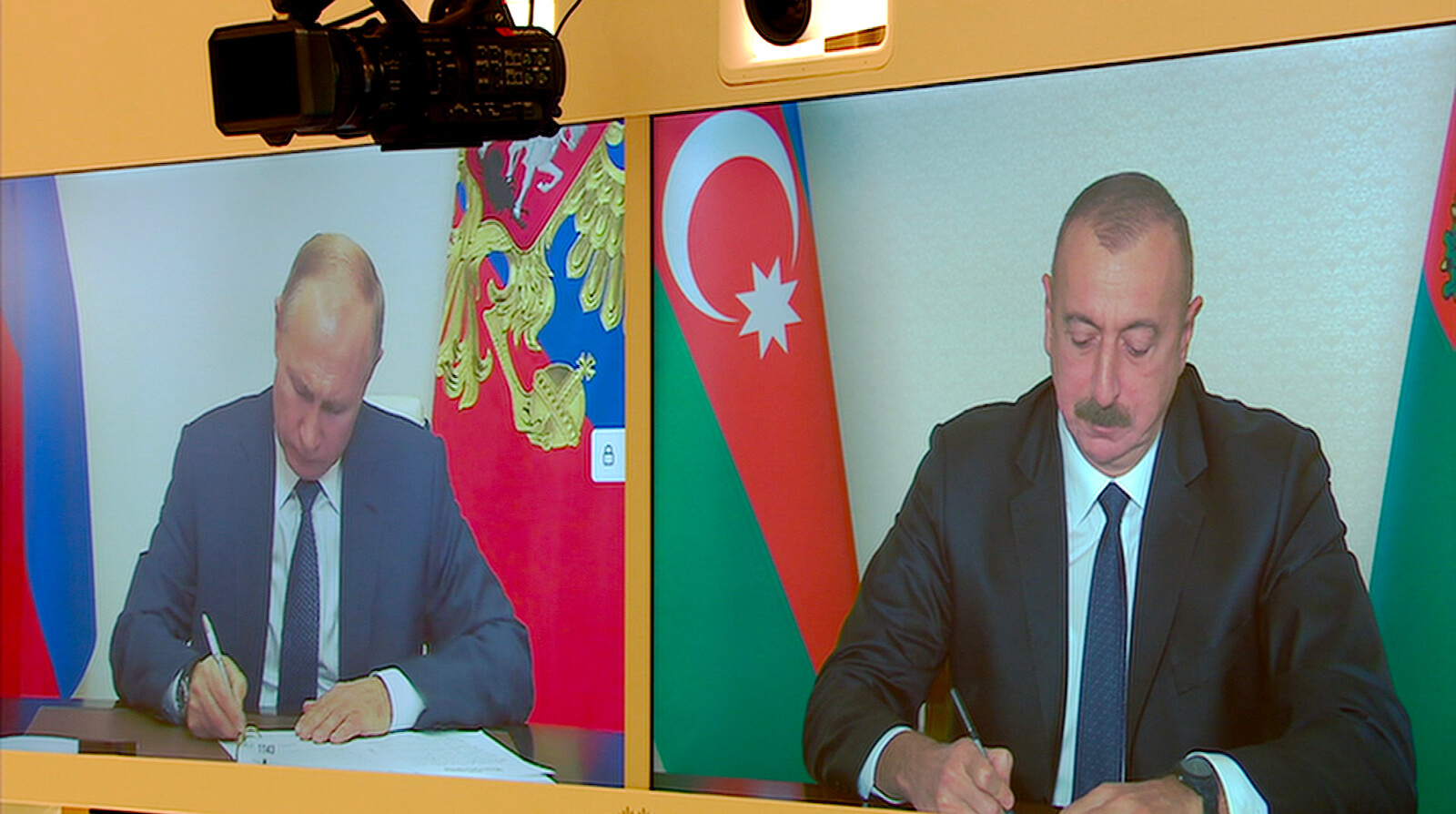
Two of the first three instances of the destruction of Armenian heritage recorded in 2021 occurred in Shushi/Shusha — a town of significant historical and cultural importance for both Azerbaijanis and Armenians. Azerbaijani forces removed the dome of the Ghazanchetsots Cathedral and tampered with its facade and demolished the Kanach Zham Church.
Right: A photo of Kanach Zham Church in Shushi/Shusha after it was damaged during the war in 2020. By 2024, Azerbaijani forces had demolished it. Photo by Fip.am; Kanach Zham Church in Shushi/Shusha after an explosion in 2020. Photo source: armtimes.com/hy/article/201297 via Monument Watch
Below: A photo of Ghazanchetsots Cathedral in Shushi/Shusha taken on 5 November 2020. Photo by Edgar Barseghyan/Wirestock via Adobe Stock
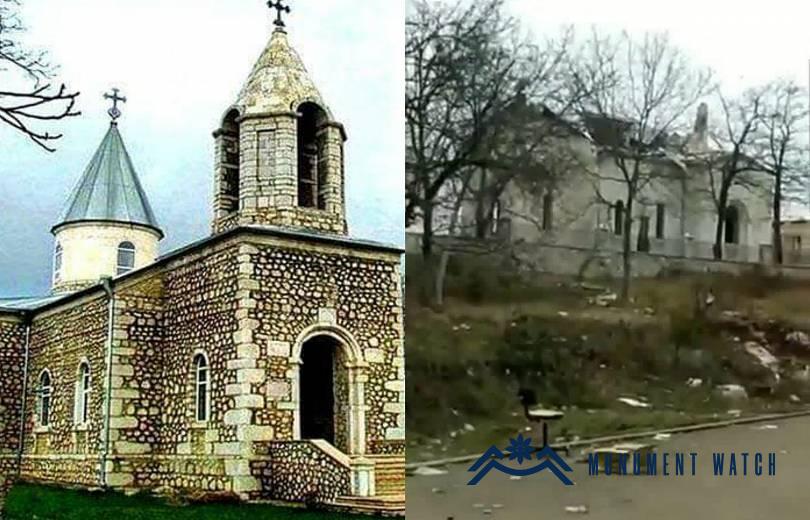
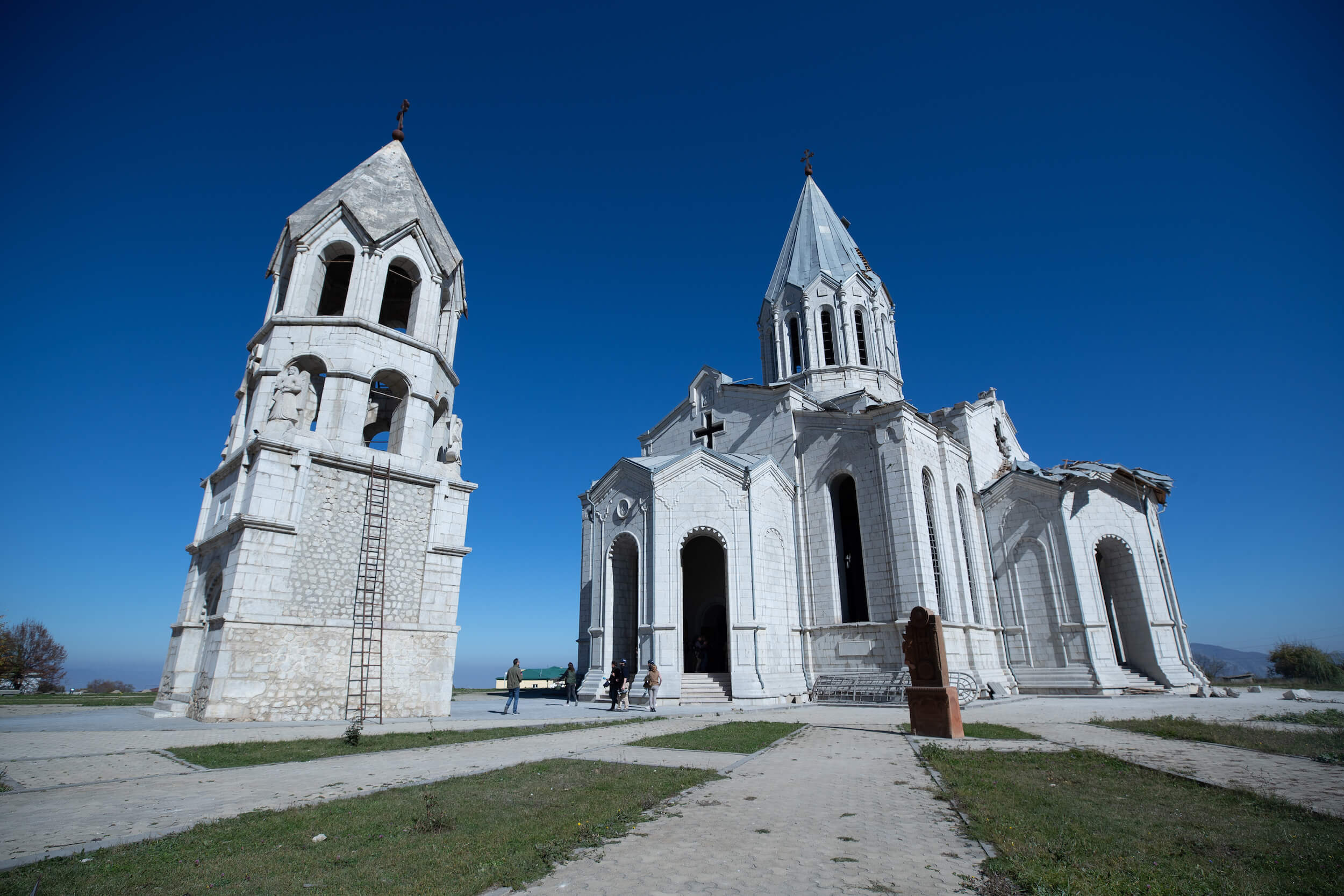
In 2022, in addition to churches, Azerbaijani forces attacked memorials of the first war over Artsakh in the 1990s and historical and modern khachkars, or Armenian cross stones.4UNESCO, ‘Armenian cross-stones art. Symbolism and craftsmanship of Khachkars,’ accessed on 13 September 2024 They also destroyed a cemetery in the village of Mets Tagher/Boyuk Taghlar, along with the local school and church.
Right: A photo of a khachkar on the edge of the North-West highway in Artsakh taken in July 2017. Photo by Benoît Prieur, CC0, via Wikimedia Commons
Below: An Armenian cemetery in the village of Mets Tagher/Boyuk Taghlar was destroyed by 2021. The cemetery was founded in the early 19th century and was in use when Armenians evacuated the village in 2020. Satellite imagery shows its complete destruction. Photo by ©CHW 2024 used by permission
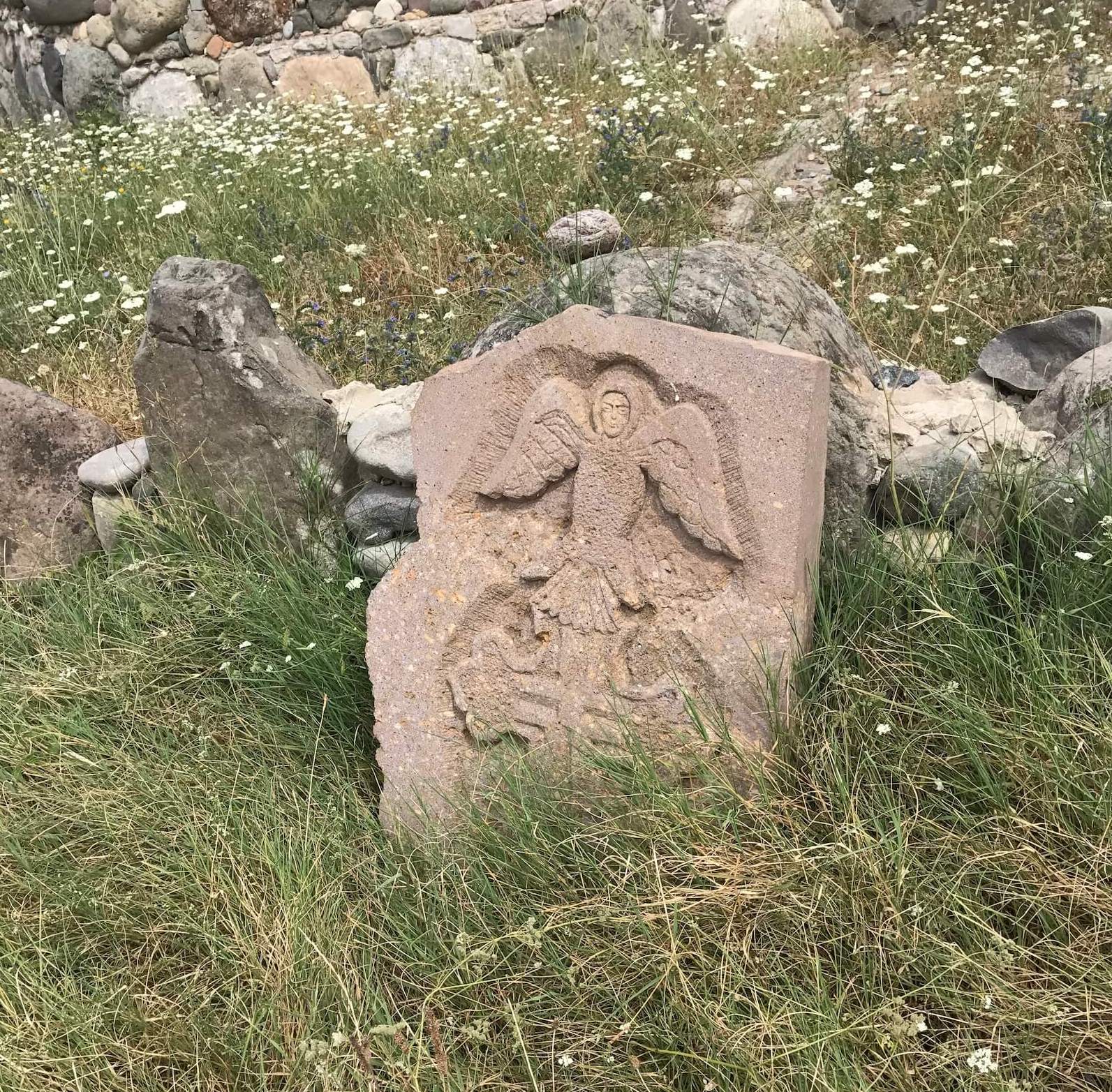
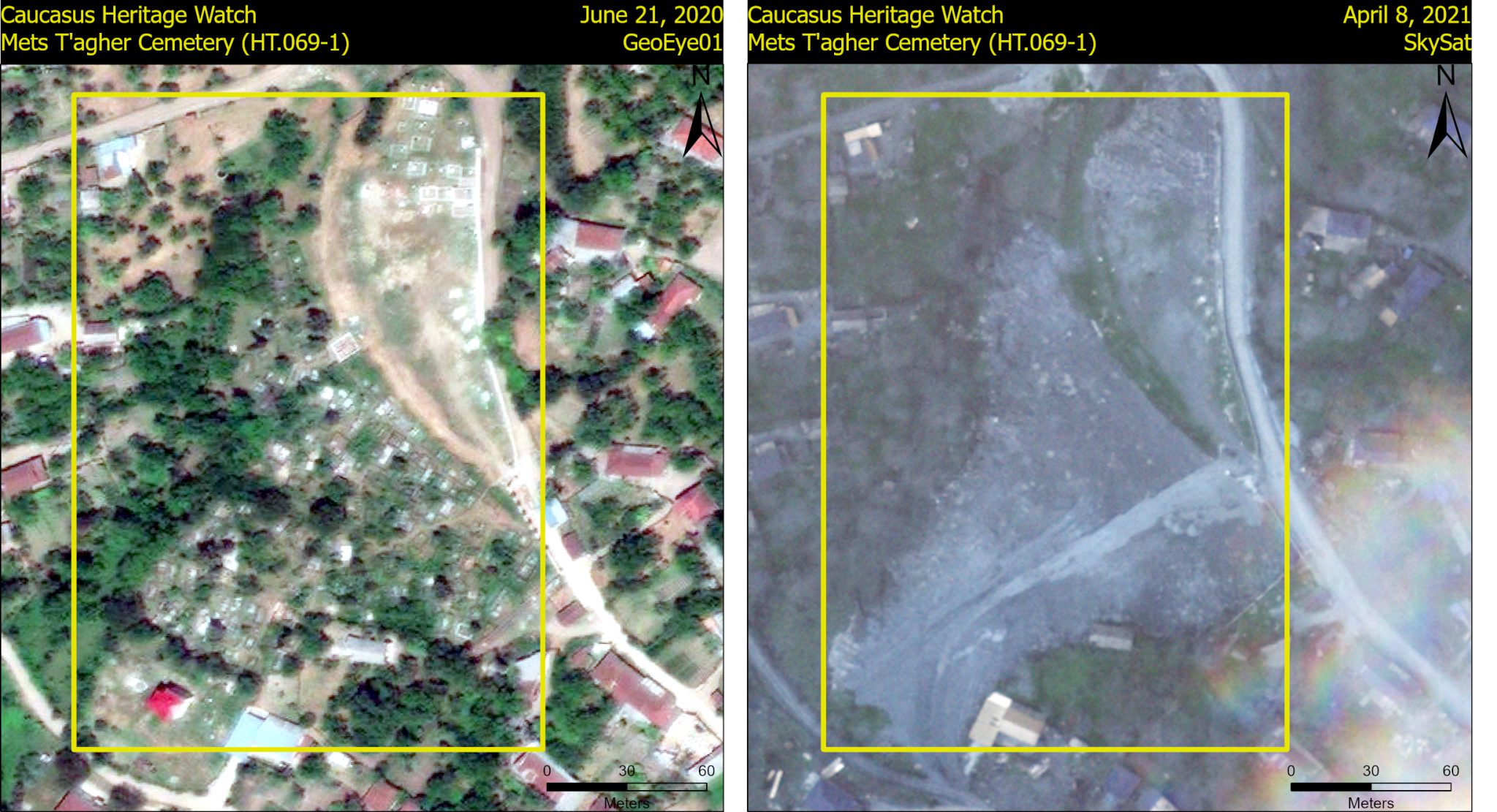
Photo 1 Saint Astvatsatsin church in Haterk with a khachkar built into the wall. Photo by H. Petrosyan; Monument Watch
Photo 2 The grave field of Khojalu in the town of Khojaly. Photo by H. Petrosyan; Monument Watch
Photo 3 Saint Sargis Church in Mokhrenes. The photo is from the certificate provided by the Ministry of Education, Science, Culture, and Sport of the Republic of Artsakh; Monument Watch
Photo 4 Saint Astvatsatsin Church of Ukhtadzor. The photo is from the Database of monuments of the MESCS; Monument Watch
Photo 5 This monument commemorates the people of Hadrut who died in World War II. Photo by S. Danielyan; Monument Watch
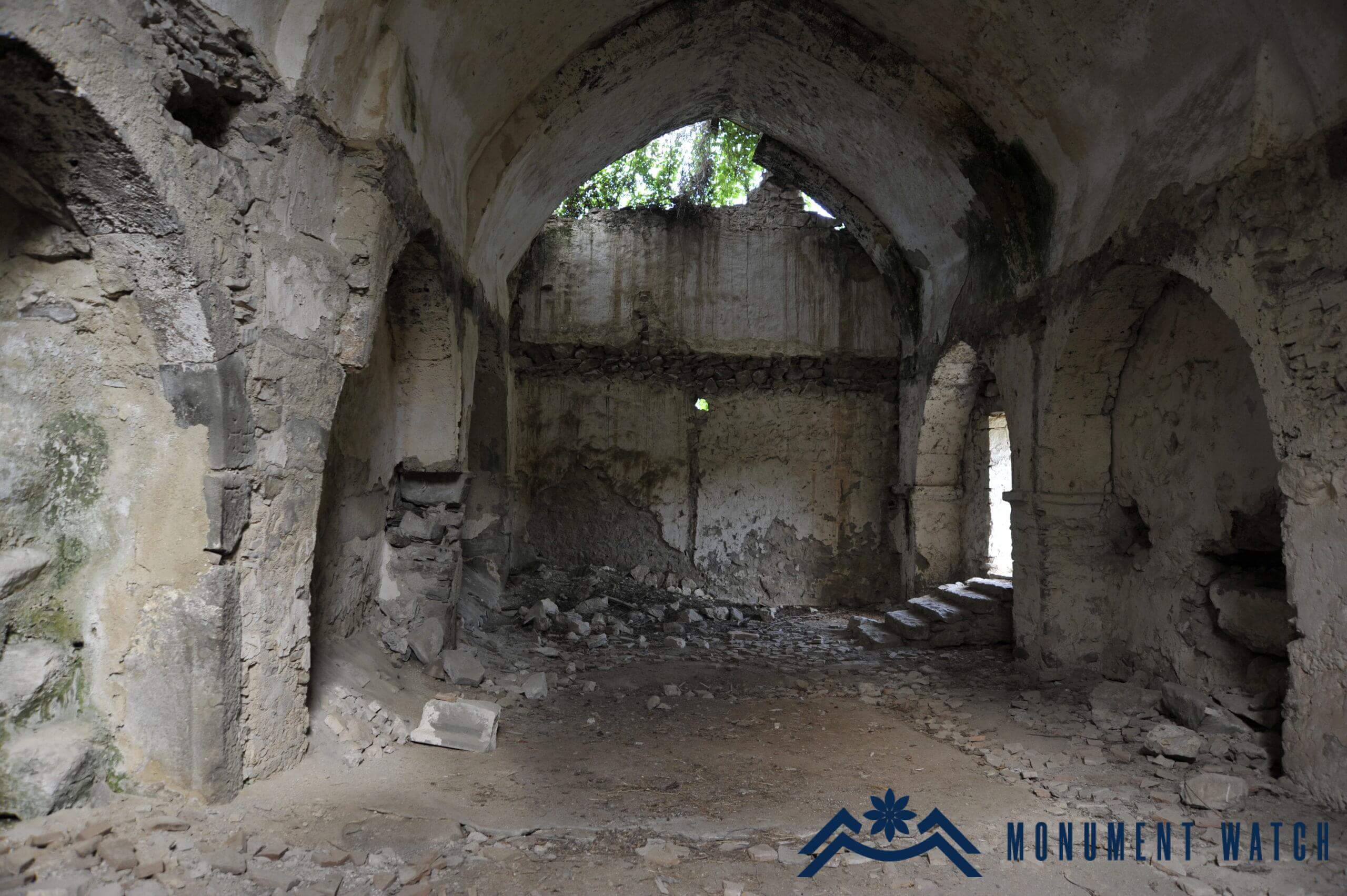
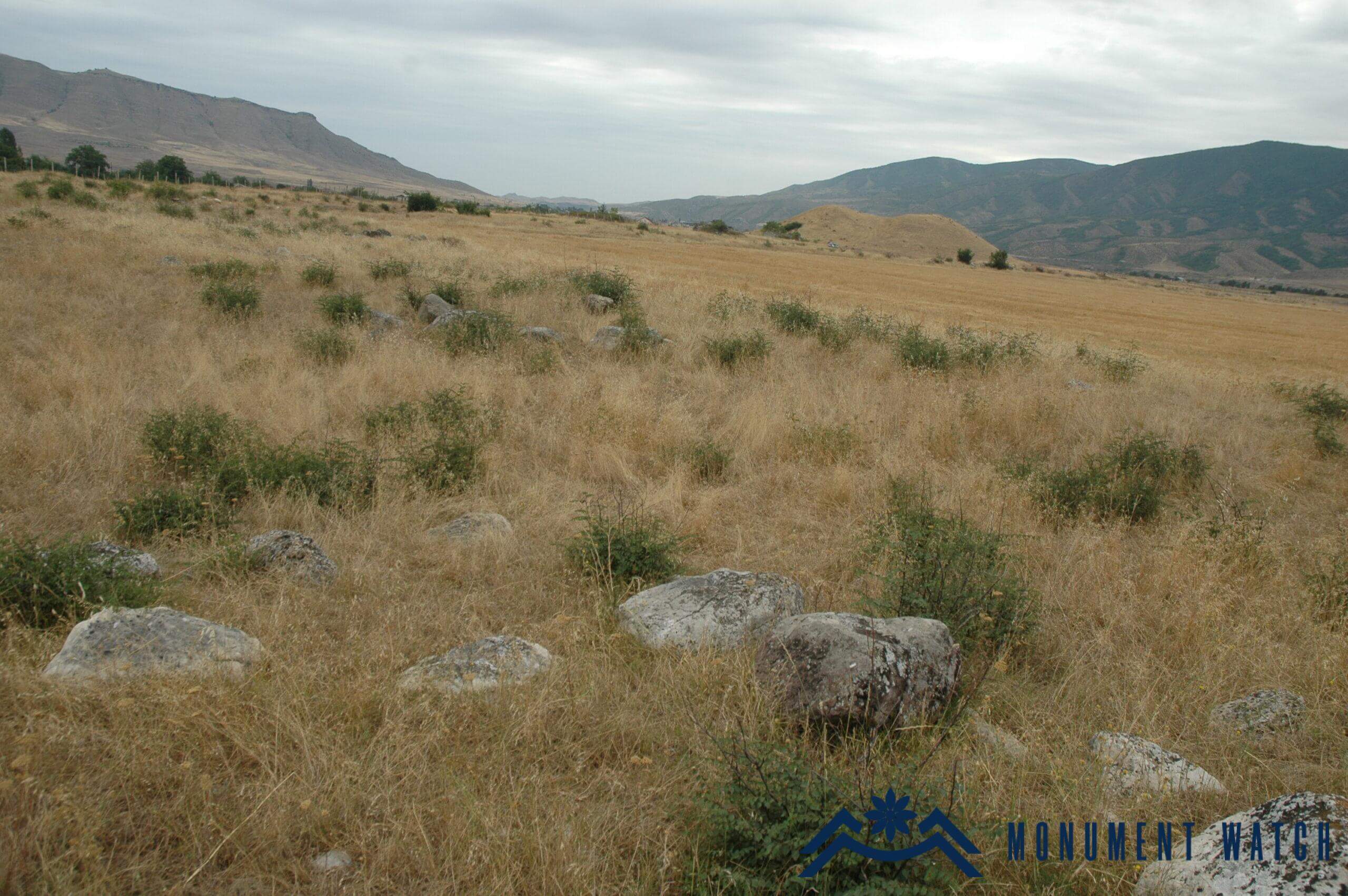
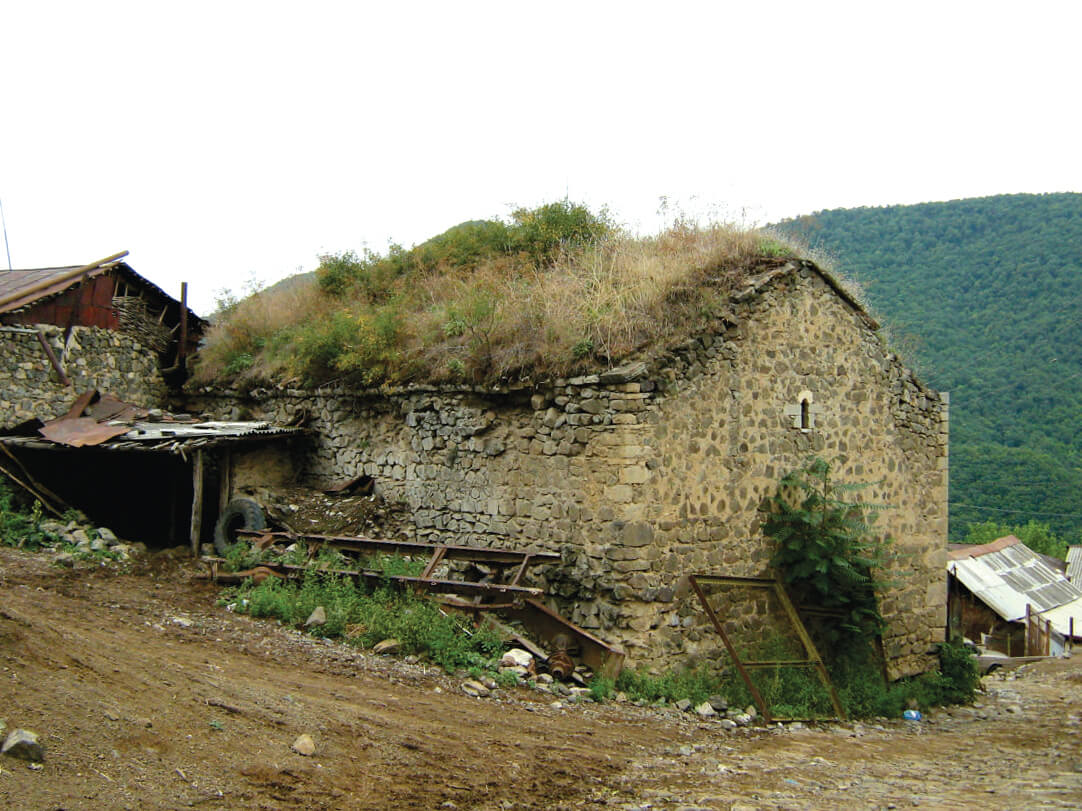
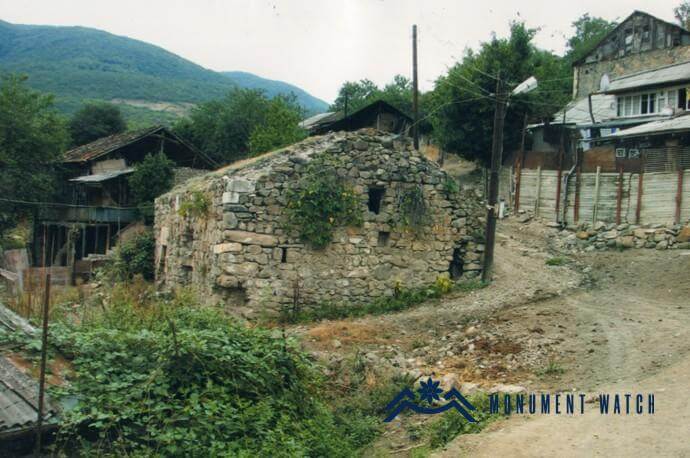
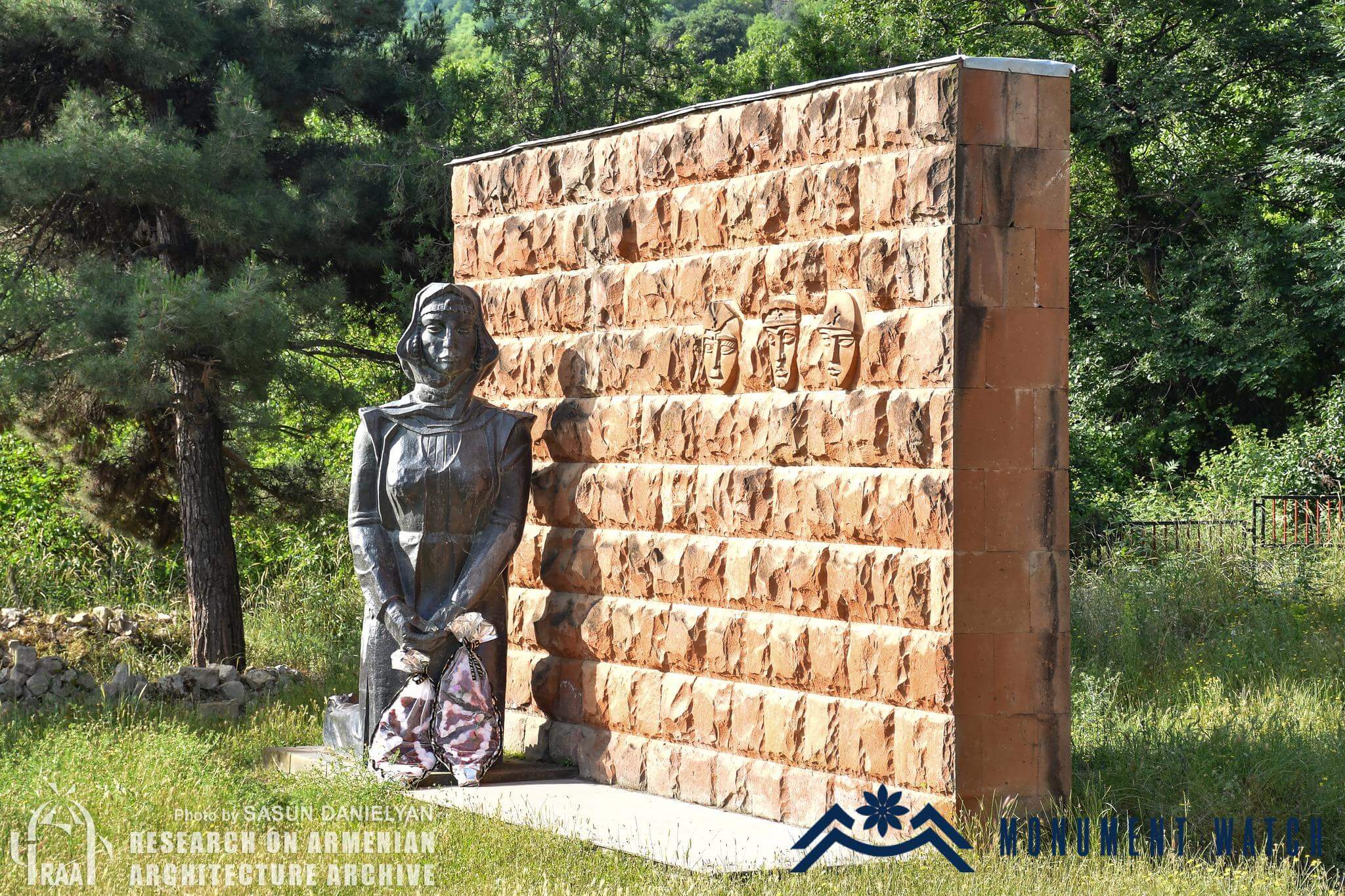
Apart from the demolition or desecration of Armenian churches and cemeteries, ACLED records several instances of the destruction of residential properties in 2023. These often occurred ahead of the resettlement of ethnic Azerbaijanis to the areas around Artsakh. Azerbaijani forces also destroyed a historical Armenian cemetery in Lachin to make way for road construction and several khachkars dating back to the 14th to 16th centuries.
In September 2023, after a one-day offensive, Azerbaijan forced Artsakh to surrender. Russian peacekeepers did not intervene. The entire ethnic Armenian population of Artsakh — 100,000 people — left for Armenia via the Lachin corridor, which Azerbaijan had previously blocked for 10 months.
Armenians fleeing Nagorno-Karabakh on 28 September 2023 sit in a long traffic jam along the Lachin corridor. Photo by Siranush ADAMYAN/AFP via Getty Images
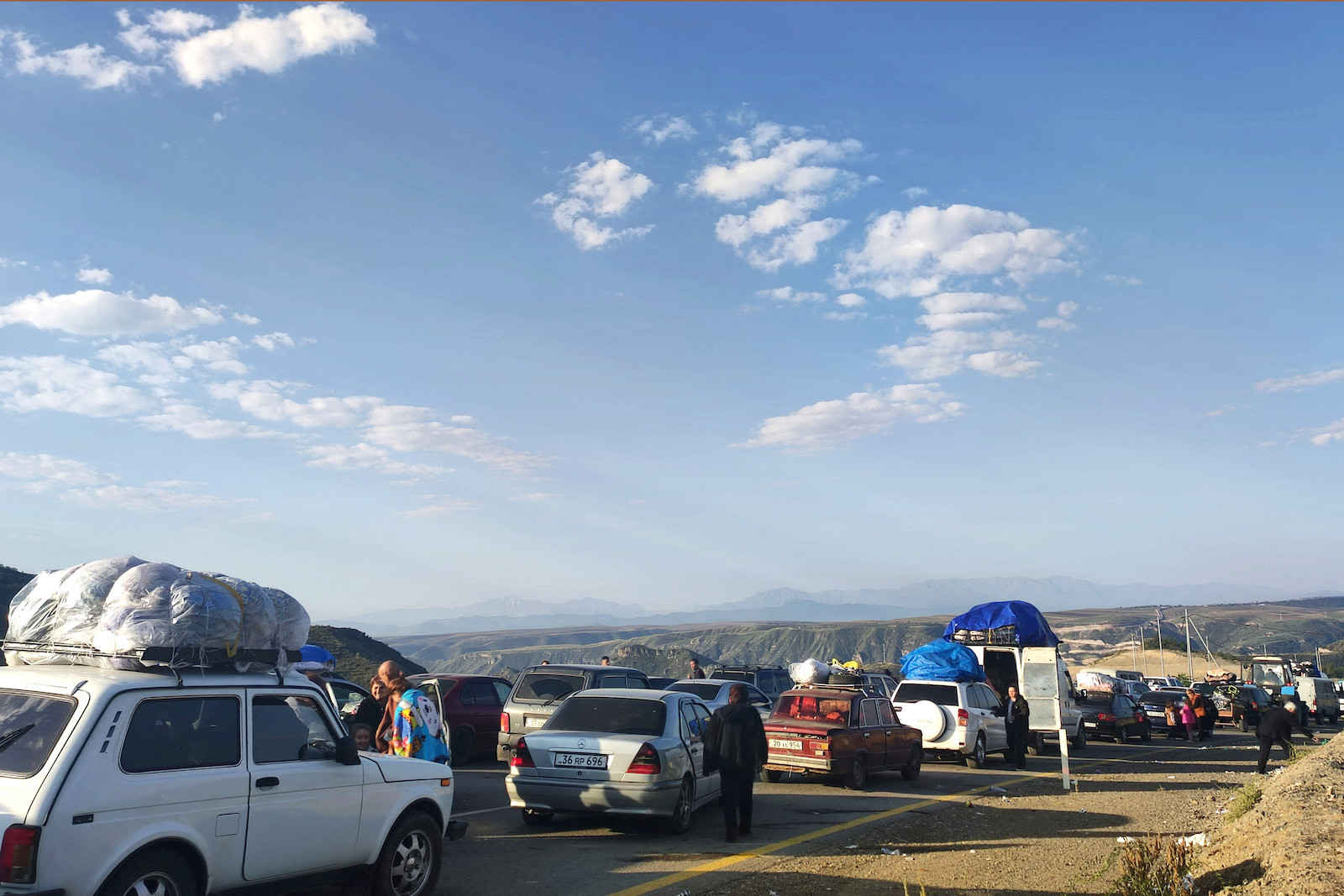
Since late 2023, Azerbaijan has been removing traces of the Artsakh political project, mostly in Stepanakert (known as Khankendi in Azerbaijani), which served as the enclave’s capital. Azerbaijani forces also began toppling monuments and statues of prominent ethnic Armenians, including those erected during Soviet rule, and plaques commemorating those fallen during the wars over Artsakh.
Photo 1: Monument of Alexander Myasnikyan on Martuni Street in Stepanakert/Khankendi. Photo by Monument Watch
Photo 2: Comparison photos of the monument to Stepan Shahumyan, a Bolshevik, in Stepanakert/Khankendi. The photo to the right shows the toppling of the statue in November 2023. Photo by Monument Watch
Background: Renaissance Square in Stepanakert/Khankendi, Artsakh. Photo by Vmakenas, CC BY-SA 4.0 via Wikimedia Commons
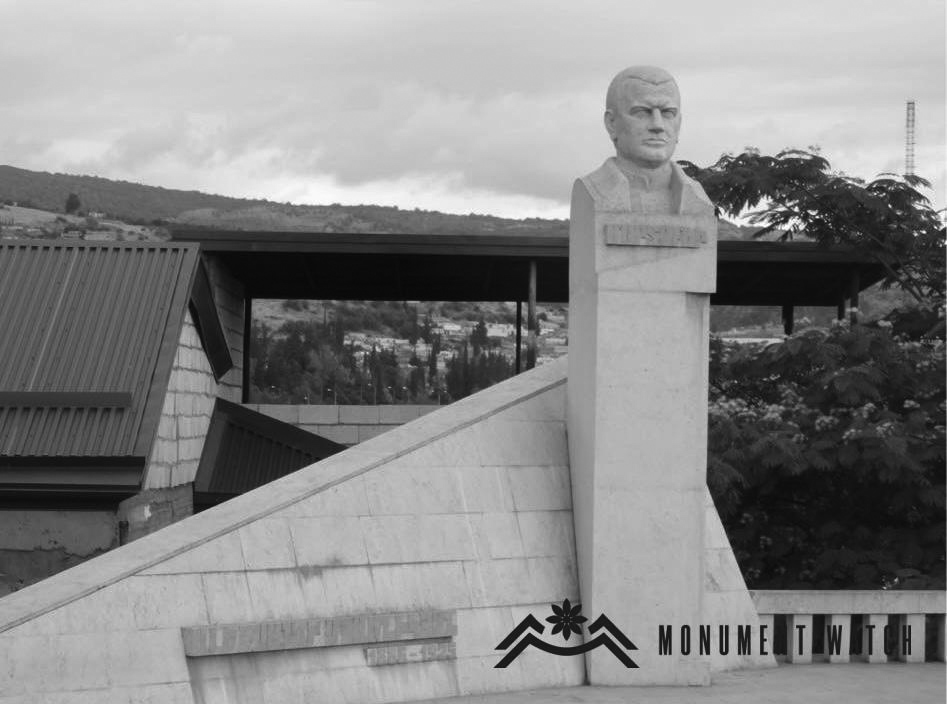
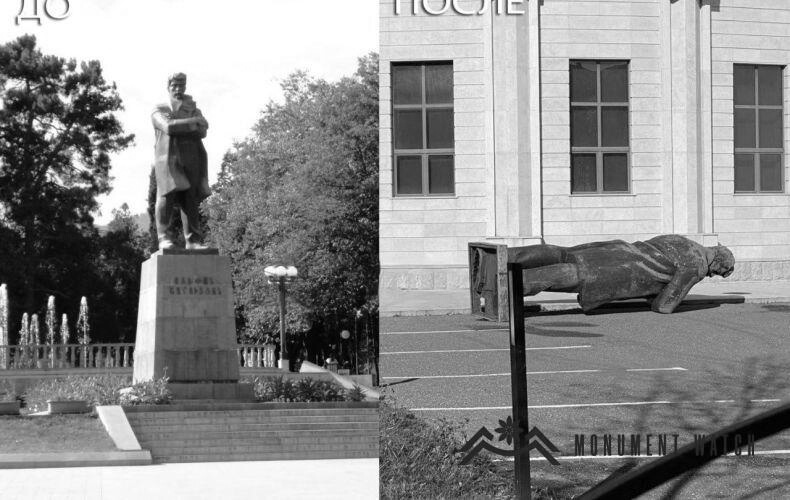
In March 2024, Azerbaijani authorities ordered the demolition of the Artsakh parliament and several other buildings in Stepanakert/Khankendi, including the Union of Artsakh Freedom Fighters (a military veterans organization), Armenia Hotel, the Youth Palace (a recreation center), and the Ararat Bank. It also began systematically destroying residential buildings in the abandoned town.
A picture of Hotel Armenia in Stepanakert/Khankendi taken in 2017. Photo by Benoît Prieur, CC0, via Wikimedia Commons
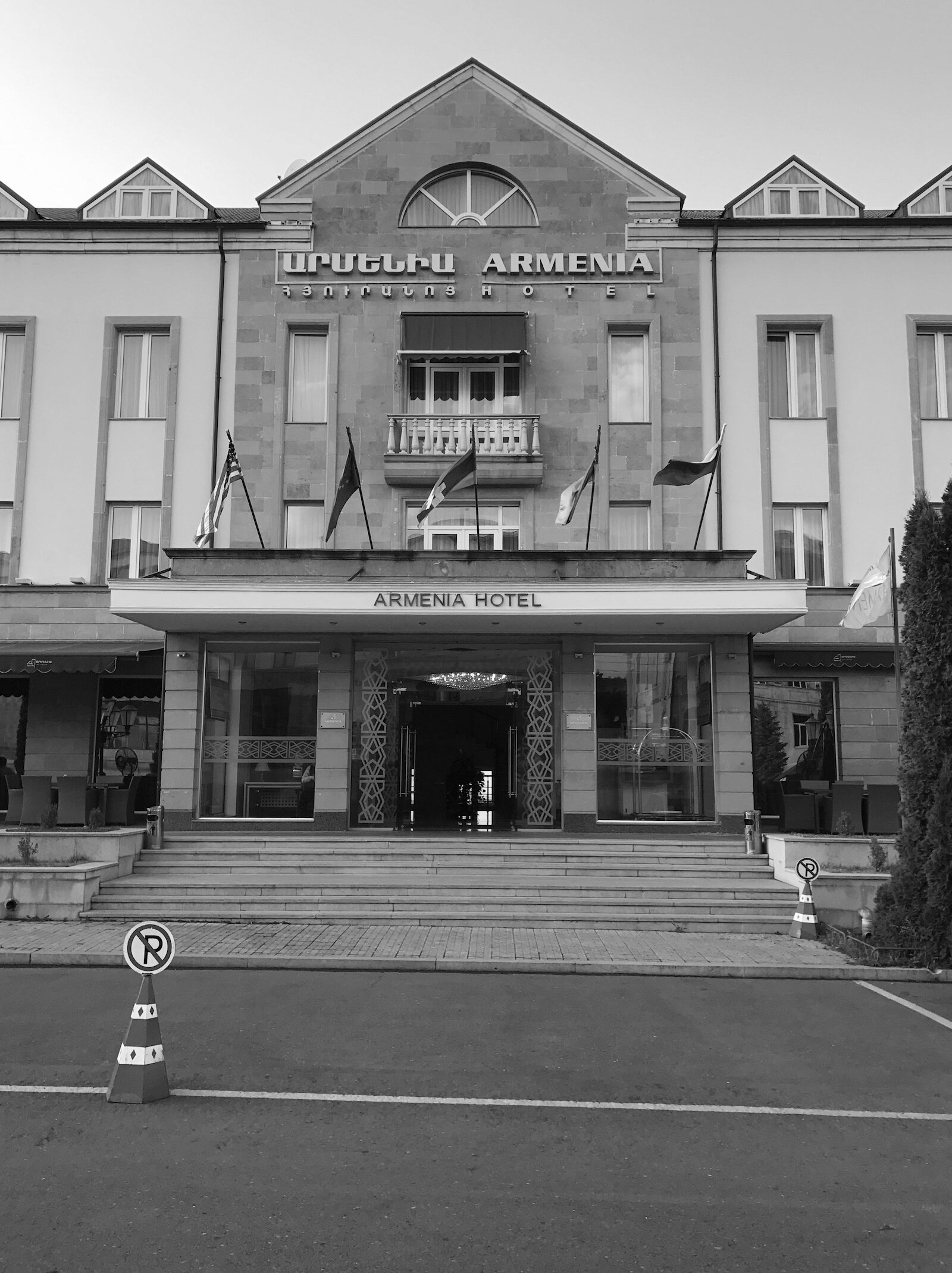
The destruction policy is not entirely new. Since 1991, Azerbaijan is believed to have all but wiped out traces of ethnic Armenian presence in its exclave of Nakhchivan.5Caucasus Heritage Watch, ‘CHW Releases Special Report on Cultural Erasure in Nakhchivan, Azerbaijan,’ 12 September 2024 The issue of land access to it via Armenia’s Syunik region has been one of the obstacles to a peace treaty between Armenia and Azerbaijan.
Proposed land link to Nakhchivan via Syunik

Visuals, maps, and design by Ana Marco, Christina De Paris and Danny Lord.

